
I help gardeners grow
& beginners blossom.
No seed left behind,
no soil unturned.
Together we can have lots of fun growing
great gardens using simple practical tips.
- Featured in -





Start saving & storing your garden seeds for a more more sustainable future
SIGN UP to get the FREE Seed packet PDF
X CLOSE

The Solution (to most of your problems) is in the Soil
Is your garden a horror story instead of a fun family film? If so, maybe your soil is less than perfect.
Everything, from the tiniest soil microbe to the big plant eating insects, depend on a balanced soil to grow balanced mineralized food.
It’s hard to admit to creating your own chaos but some of us do it daily in our soils. This affects plant health but when we eat the less than perfect plants, it affects our health too.
Do you create your own garden problems? Make the wrong additions to your garden soil and cause chaos that kills innocent species later?
I believe in “whole food” gardening because it reminds us that – like life generally, soils are complex interactive living organisms. They are not simply test -tubes that we can pour various items into.
Okay five percent of food is grown in hydroponic systems and those really are test tubes full of growing additives. But for most of us growing food in the soil, we need to manage and feed the soil, not mess around too much trying to feed the plants.
First a couple of facts from the recent National Geographic Magazine (December 2015)
- 95% of the world’s food grows in soil
- Soil is composed of 45% minerals, 25% water, 25% air, and 5% organic matter
- ¼ of the world’s species live in the soil
- Healthy soils can absorb an estimated 10% of human generated carbon emissions
So everything you do to the soil you do to ¼ of the world’s species, the food we eat, the air we breathe and global warming. If you add excess amounts of nitrogen just because you get free manure or find fertilizer on sale, that nitrogen contributes to sub-soil water pollution or pollutes groundwater and gets into rivers as run-off drifts onto the street. Excess nitrogen in the soil doesn’t hang around waiting to feed plants. Excess nitrogen burns through organic matter, releasing carbon back into the atmosphere that should be in storage in the soil organic matter. Either way, excess nitrogen causes trouble.
If you have heard randomly that soils need magnesium and you decide to add more through adding extra Dolomitic Lime or random amounts of Epsom salts (a common practice with rose growers) you could run into trouble when, over time, clay soils grab hold of that magnesium and tightens up.
Tight soil has fewer air spaces than needed to keep soil life alive. Plants suffer because the roots continue to respire and use oxygen even though the soil can’t draw in enough oxygen. Plants suffer and sometimes die from root-related problems.
In the soil, air-loving (aerobic) microbes need air to function and they die without it. As they die they are replaced with anaerobic microbes that make stinky rotten egg smells and can kill plant roots. And all along, the tight soils causing these problems were created by you. By creating a magnesium imbalance.
If a bit of Boron is good does that mean a ton of Boron is better? Not at all. Tiny amounts of the micro-nutrients like Boron are very important. The boron lines roots and assists in water movement from the soil to upper plant parts. But large amounts of Boron can sterilize the soil and kill everything from insects to roots to microbes.
I know this from personal experience when a “mother of the bride” put out Borax to kill ants just before her daughter’s wedding and we both found out – by accident – that when you broadcast large amounts of Borax it doesn’t just kill ants. It kills everything. The garden party was fine but the garden was dead on the wedding day.
Potassium is another mineral needed in so many ways by plants but when it is available in large amounts compared to Phosphorus, plants don’t produce as much protein and they produce more carbohydrates. So it is suddenly possible to get fat from eating lettuce grown on high potassium soils instead of balanced soils.
You can have your soil tested and start trying to balance the soil to re-mineralize it. This will mineralize the food you grow in your soil and instead of high-carb lettuce you could grow lettuce that competes with steak in protein value (20%) (See The Intelligent Gardener by Solomon)
If you have a boron deficiency (browning in the center of cabbage) you can safely add a bit of washing soda – just a tablespoon per 100 square feet. Too much Boron kills roots, and by default plants as well as soil microbes and insects, so don’t overdo it.
But the bottom line with mineralized soils vrs. fertilizer use is you will never, ever add things in excess that will cause trouble in the environment if your soils are in balance. Our world is just too small to be messing with random additions of chemicals and in his book, the intelligent gardener, Steve Solomon spells it out for you. But if you prefer to keep it really really safe, simply make the conditions right for microbes and they will make the conditions right for plants. It is a simple and satisfactory solution.
And by the way, adequate zinc levels in soil will control powdery mildew on your squash. But what is adequate? If you don’t have powdery mildew you have adequate. If you have ten times available phosphorus compared to available zinc it is adequate. A wise gardener observes and decides what to do. A novice gardener on new ground might just add zinc hoping it will work.
But nothing works in isolation and adding zinc to control powdery mildew without checking to see if it is in balance with Phosphorus is like filling a diesel car with high octane gas because you’ve heard high test gas is a more efficient fuel. When your car engine stops running, you can blame the failure on the gas but the problem was really in your logic. If we all mineralize our soils by adding biologically active compost or biochar that can grab and hold microbes until they do the work for us, we will be better off. Microbes instead of random elements, will create the best soil environment ever and we will start growing the best food ever.
I suggest experienced and novice gardeners read Steve Solomon’s book The Intelligent Gardener but balance that by looking at Jeff Lowenfells’ Teaming with Microbes and Teaming with Fungi. Doing that might not save your life but it will save the life of your soil and the unnecessary waste of fertilizers.
If you prefer to feed microbes directly and let them feed your soils, add dry or composted kelp to feed bacteria and fish or fish fertilzer to feed fungus. Natural seed meals like canola or soya oil can provide extra nitrogen. Chop and drop all your fresh greens directly on the garden ( I am currently testing a new Maestro Chipper-Shredder by Eliot for this purpose.)
Finally, do a biological test (rather than a mineral test) and check to see if you have the numbers of bacteria and fungus and protozoa needed to mineralize your soils naturally.
As usual there is more than one way to do everything and I lean towards the natural method of feeding soil microbes.
What Would Donna Do?
Get my growing and gardening tips and pointers throughout the season.





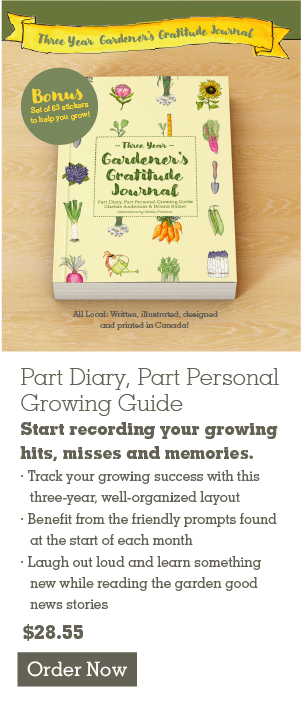





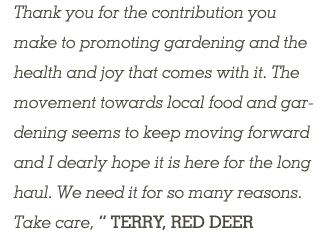
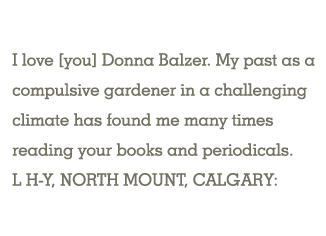
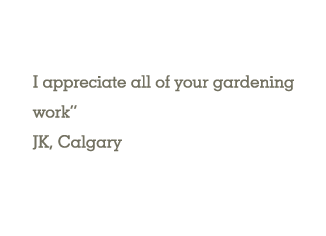

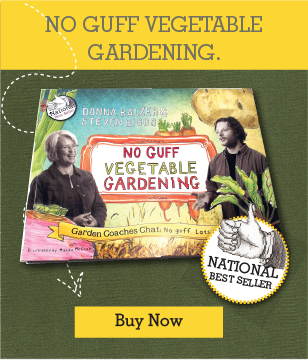
0 Comments